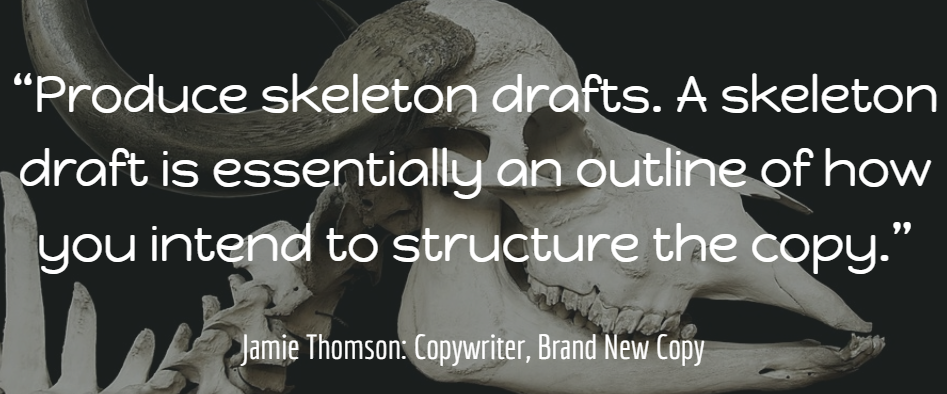Turns out, people in the B2B world are human too—who knew?
I just spent the past month as an intern copywriter at Radix, and one thing that came as a surprise to me was how much B2B copywriters think about emotion.
The common misconception is that B2C buying is an emotional experience, whereas B2B buying is a strictly rational one. But (whether they like to acknowledge it or not) B2B buyers can get rather emotional in their buying experience.
We’re in a new age where B2B copy doesn’t have to be dry and serious. It can be fun, emotive and playful—and often, it will have to be these things in order to help your brand stand out from the competition.
That’s where we come in. As B2B copywriters there’s a variety of ways we can harness a reader’s emotions to produce smart, effective copy.
Thinking, fast and slow
If you learn the way your audience thinks, it becomes much easier to tailor your copy to them.
Nobel Prize winner Daniel Kahneman’s theory of ‘Thinking, fast and slow’ is an invaluable way to think about the role of emotion in decision-making. But while it’s used frequently in B2C marketing, it seems the concept is rarely applied in B2B.
Kahneman’s theory is simple. He divides our thought processes into two systems:
System 1: This is the automatic response. There’s no controlling this; it is the instantaneous emotional reaction you have towards something—this is the driver of emotional buying.
System 2: This response requires effort. It is a deliberate, thought-out response, and can be controlled to rationalise decisions—this is the driver for rational buying.
Before stepping into the B2B world, I had the impression that System 1 was non-existent among businesses. Yet, in my first week I was already being shown how to consider the emotional reactions of my audience, and reflect it in my copy.
In this blog post, I’ll be sharing what I learned about using audience emotion in B2B copy.
Friendly is the new fear
Something I learned very quickly during my internship at Radix is that subject lines can make or break an email: even the greatest email won’t get opened if it has a poor subject line.
Here’s where System 1 can be used to full effect. Generating an emotional response from the reader can be a great way to make them open your email.
But what kind of emotion are you looking for?
As Fiona and David explain in their podcast episode about using emotion in B2B copy, fear is quickly becoming out of date. Instead, producing intrigue with a friendly approach is much more effective.
Fiona gives a great example in her blog post all about writing great subject lines:
![]()
Econsultancy go for a welcoming approach while creating intrigue. The System 1 reaction is a positive response, with no fear in sight.
Easier, simpler copy
After spending half the day trudging through whitepapers, ebooks and research reports, having to use System 2 can be a real chore.
People want to be able to get the information they need, as easily as possible. Use their boredom to your advantage.
This may seem like simple advice, but these tools are a great way for you to capitalise on the difficulties of using System 2, and use your audience’s System 1 response to full effect:
- Bold text is often processed by the reader without them even noticing
- Italics are useful for stressing emphasis on a word
- Bullet points are easily digestible—see how easy that was?
Making your copy approachable will create a more positive response from your reader than unnecessary streams of paragraphs.
continued below…
Further reading…
Subject lines: the secret shortcut into the subconscious
Most B2B marketers believe the sole purpose of a subject line is to get your email opened. Steve explains why that isn’t even half the job.continues…
Loyalty and logic
Reflecting brand identity in your B2B copy is a sneaky way to tap into your audience’s System 1 response, when they think they’re using System 2.
When thinking about brand in terms of Kahneman’s theory, it’s much more of an automatic emotional response than a rational one.
Think about Apple. Is it a rational response to want a laptop that costs £500 more than another, yet does roughly the same thing?
Not really, but our emotional reaction to Apple’s branding makes us think it is. And System 2 is left picking up the pieces: clutching at reliability, virus protection, residual value, and similar claims, to post-rationalise a decision we’ve actually already made.
The same concept can be used in B2B copy. Apply tone and voice that provokes the audience’s System 1 response, as you give them the business case to persuade them they’re making a purely rational decision.
Look at Dell for example. Their business solutions page has minimal copy, yet the tone in their copy exudes complete brand confidence, and uses social proof to help you feel comfortable:
“Organizations around the world choose Dell solutions and services to help them achieve unique business goals, improve competitiveness and better serve customers.”
By the time System 2 prompts you to drill into the detail around a solution, you’re already feeling reassured about Dell as a safe pair of hands. It’s not a done deal, but it’s an advantage.
Or take a look at our recent B2B Content Hall of Fame nomination for Salesforce, another business who use a clear, positive brand promise to tickle your System 1 response.
They have the facts to back everything up… but it’s the cuddly way those facts are presented that make you feel like these might be nice people to work with, and the platform might well be fun and easy to use.
Hearts and minds
Ultimately, B2B copywriting is about what you say, and how you say it.
When you produce friendlier, simpler and more confident copy, you achieve greater results by getting an emotional response from your audience—without them even realising it.
And when that copy also makes a compelling case, that’s the magic moment when emotion and reason – System 1 and System 2 – finally align.
Want to learn more about emotion in B2B copywriting? Listen to this episode of the podcast Good Copy, Bad Copy to hear Fiona and David share their advice. Or, for more content writing tips and tricks, sign up to the Radix newsletter at the bottom of the page.



